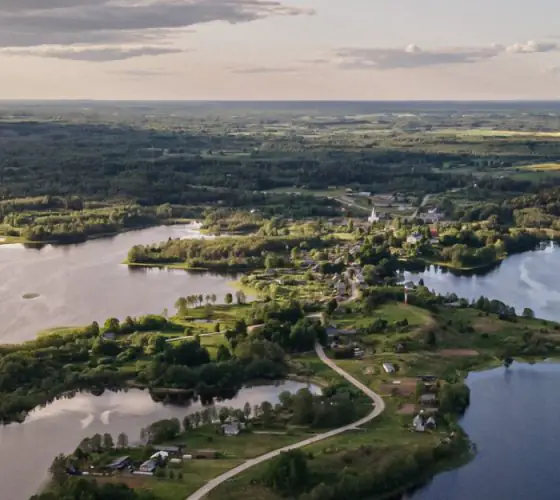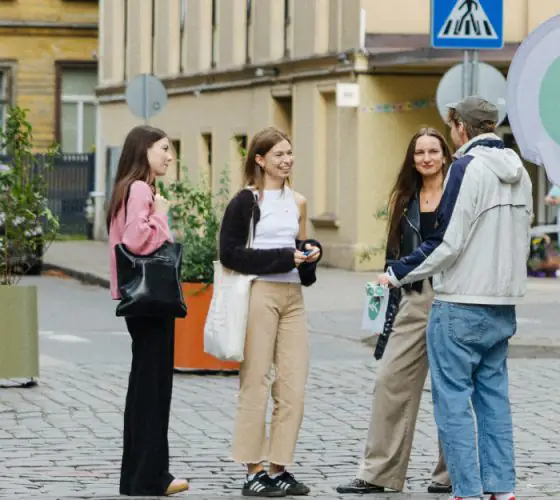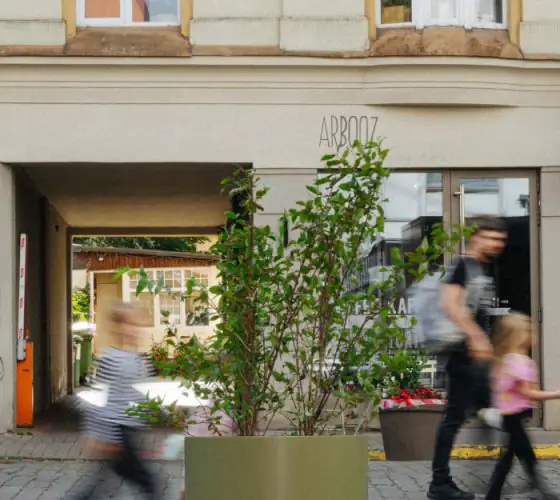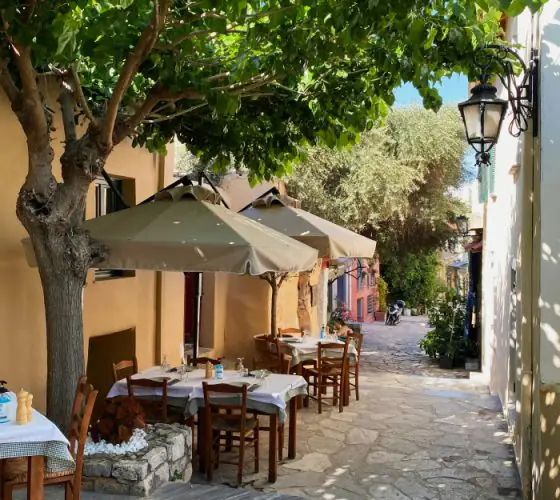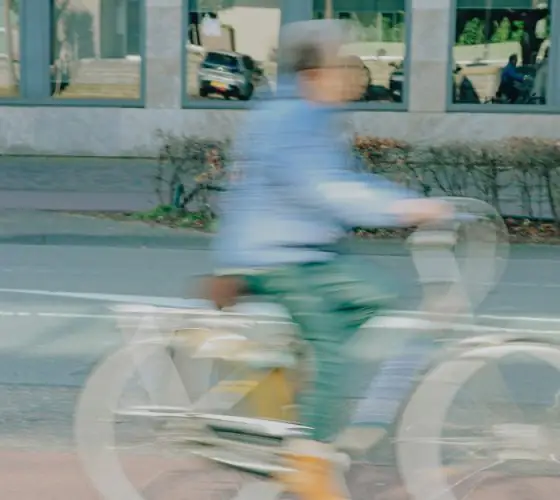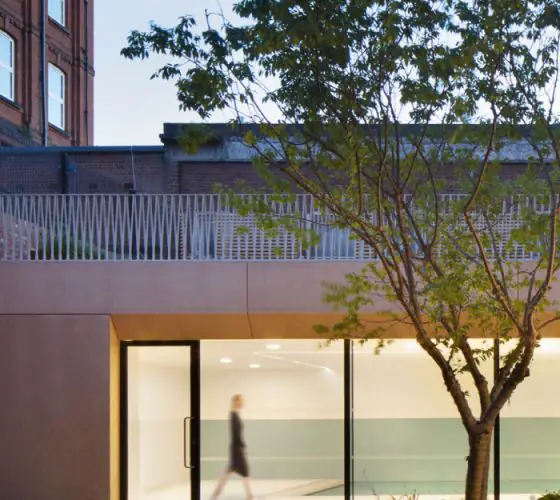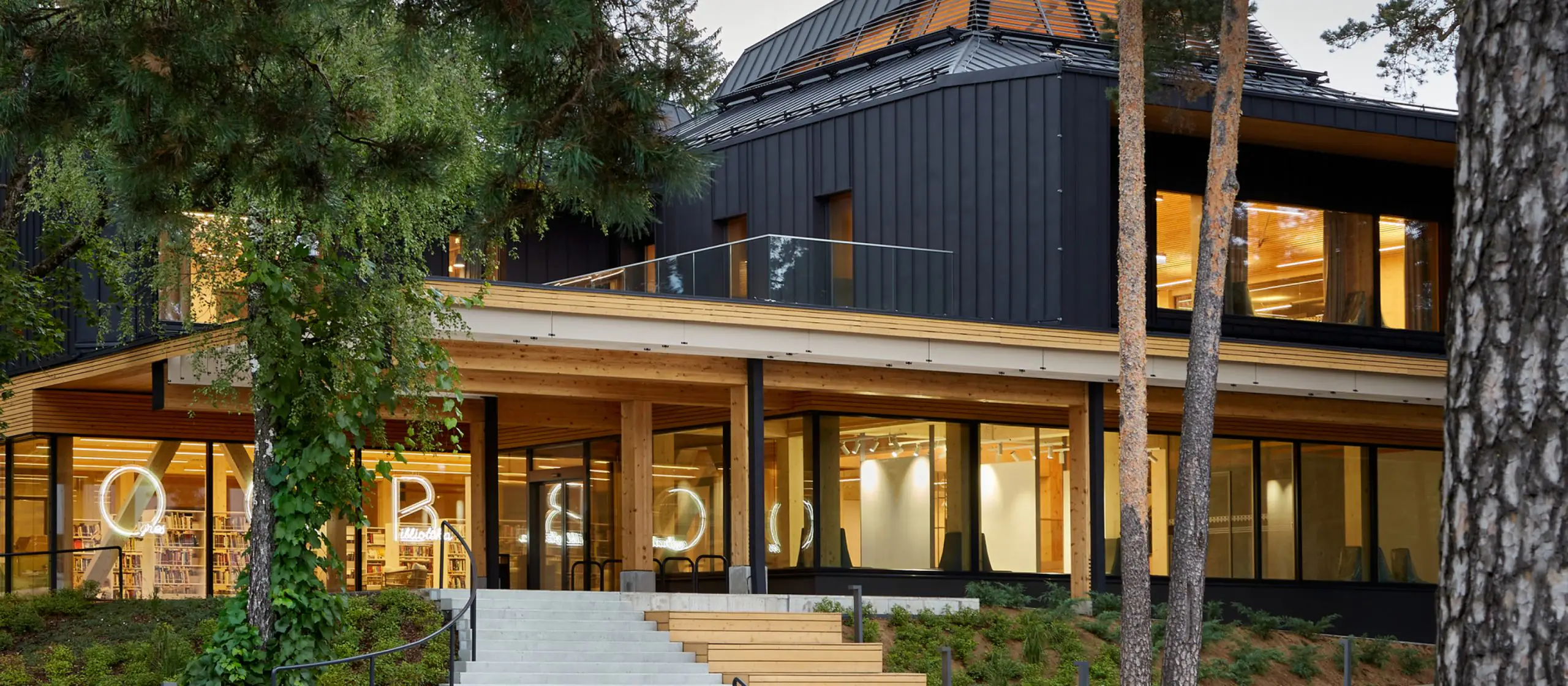
archdaily.com
LIBRARIES AS NATIONAL SYMBOLS
For those of us who call Riga their home, the National Library of Latvia has become a natural part of the silhouette of Riga. Due to its architectural forms and the poetic story behind its idea it has become a strong national symbol. The architecture of Latvia’s National Library, also known as the Castle of Light, is a striking example of modern design combined with cultural symbolism. Designed by renowned architect Gunnar Birkerts, the building features a sleek, glass facade that ascends into a dramatic, angular peak, reminiscent of a mountain or a fortress. While the Castle of Light might be one of the best recognised libraries in the Baltics, the examples found in the neighboring countries are by no means less impressive.

adobestock.com
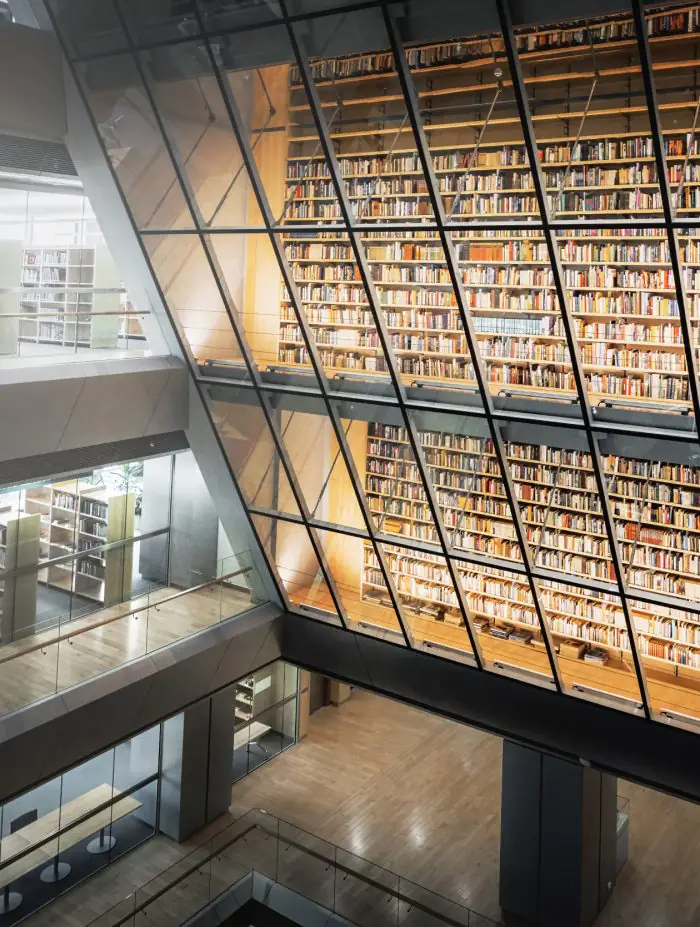
adobestock.com
The Martynas Mažvydas National Library of Lithuania, established in 1919 and located in Vilnius, is a cornerstone of Lithuanian culture and intellect. Named after the author of the first Lithuanian book, the library serves as a guardian of the nation’s literary heritage, housing extensive collections of books, manuscripts, and historical documents.

archdaily.com
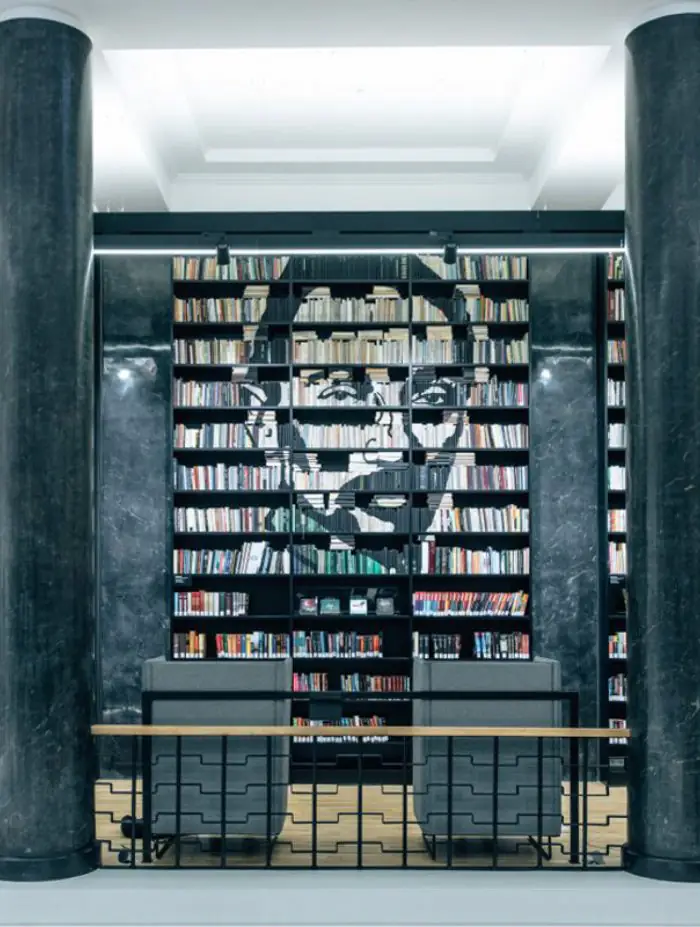
vilniusplayground.com
The library’s architecture combines historical and modern elements. The original building, completed in 1963, was designed by architect Vytautas Landsbergis-Žemkalnis, showcasing Soviet-era neoclassical design. These kinds of architectural forms are recognizable y across eastern Europe. However, the recent refurbishment, completed in 2016 and led by architect Rolandas Palekas, modernized the building with state-of-the-art technology, improved reading areas, and better collections preservation conditions while maintaining its architectural integrity.
Looking up north in the Baltics, the National Library of Estonia is an impressive example of modernist design, completed in 1993 by the architect Raine Karp. The building is noted for its monumental and robust structure, featuring large, open interiors and functional spaces designed to accommodate both its extensive collections and a variety of public activities. The massive walls, the central rose windows and the imposing feeling of its architecture pays homage to the medieval city of Tallinn that is located right next to the library. Unlike in the case of Latvia or Lithuania, the National Library of Estonia is due to await its refurbishment to make the building more accessible and the interior more inviting to its visitors.
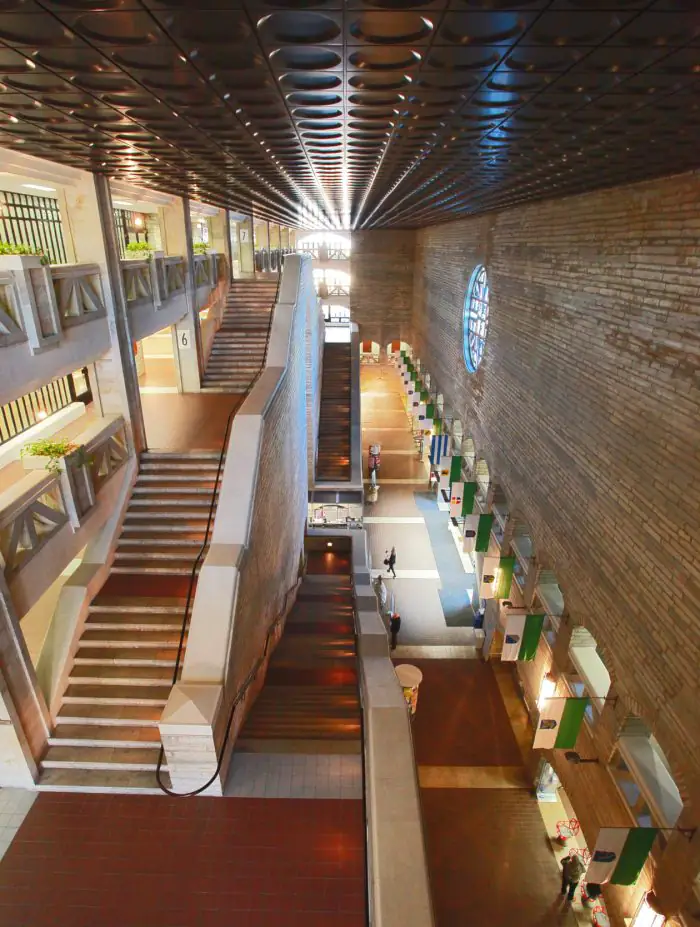
estonianarchitecture.com
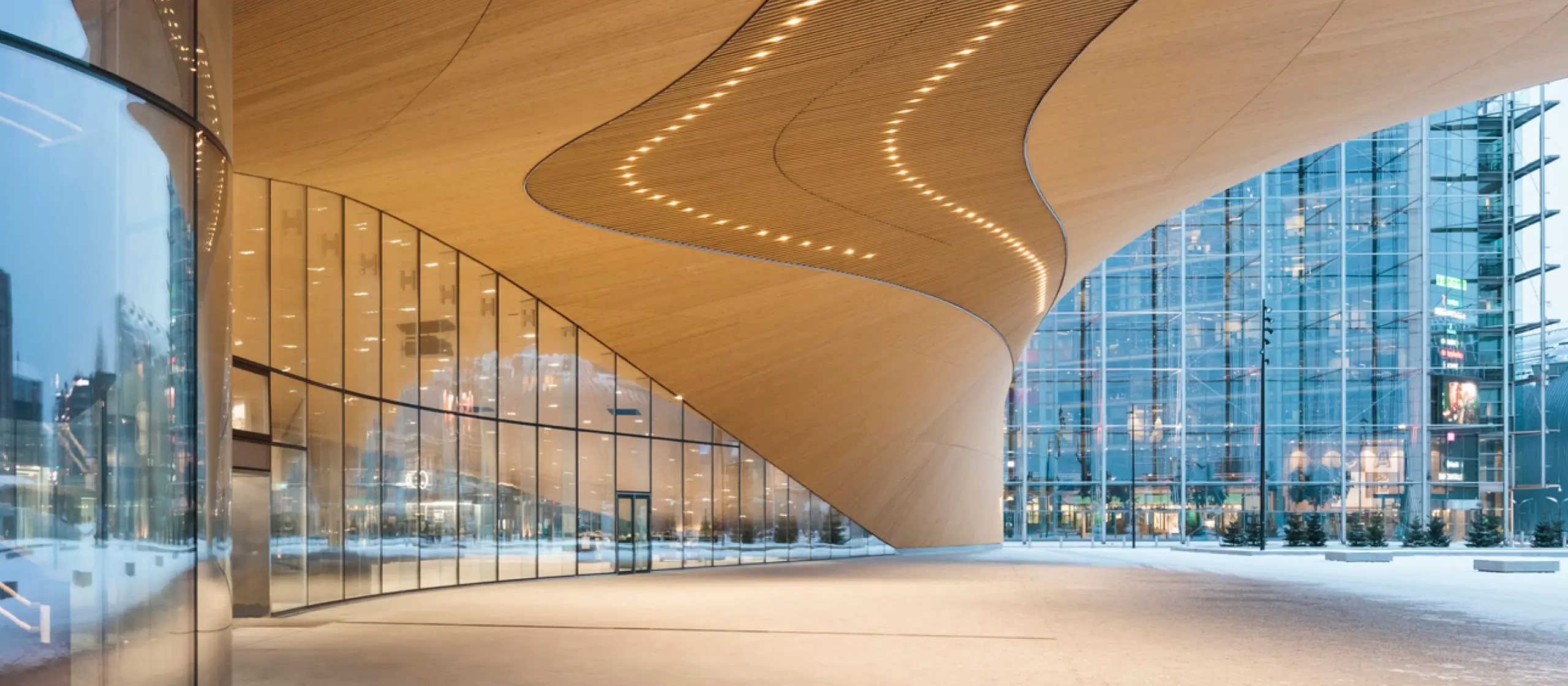
archdaily.com
LIBRARIES AS MULTIFUNCTIONAL URBAN CENTERS
Further north in Finland we can see how municipalities can play a major role in the development of the library network. The Helsinki Central Library, known as “Oodi” has become widely acknowledged as an architectural marvel and a symbol of Finland’s commitment to knowledge, innovation, and inclusivity. Opened in 2018, Oodi redefines the concept of a traditional library, serving as a multifunctional community space for people of all ages and backgrounds. Its striking contemporary design, by ALA Architects, features a sweeping, wave-like form, clad in wooden lattice work that pays homage to Finland’s forested landscape.
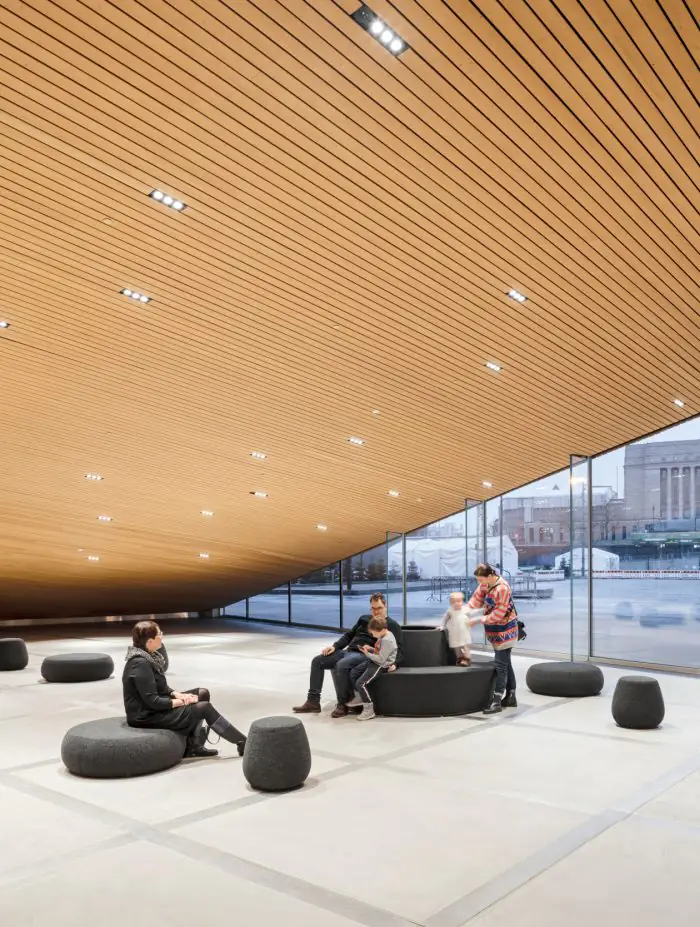
archdaily.com
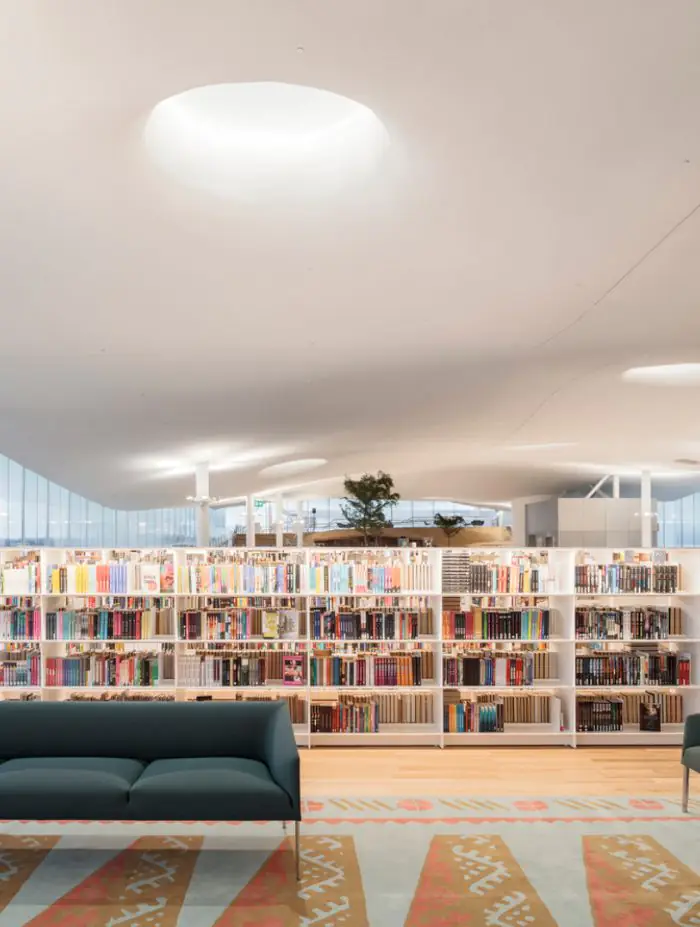
archdaily.com
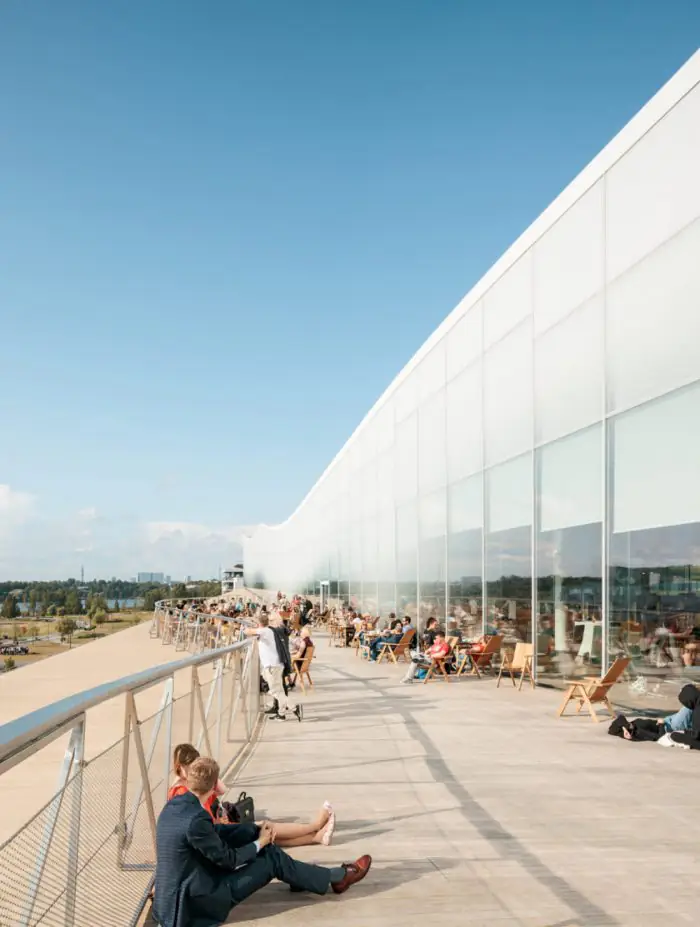
archdaily.com
Oodi offers much more than just books; it provides state-of-the-art facilities for learning, collaboration, and cultural enrichment. Visitors can explore vast collections of written cultural heritage, attend workshops, engage in digital activities, or simply relax in its inviting reading areas or rooftop garden. Oodi can serve as a great example of how libraries have become not merely as a space to read, but more of a socialization center for municipalities and their communities.
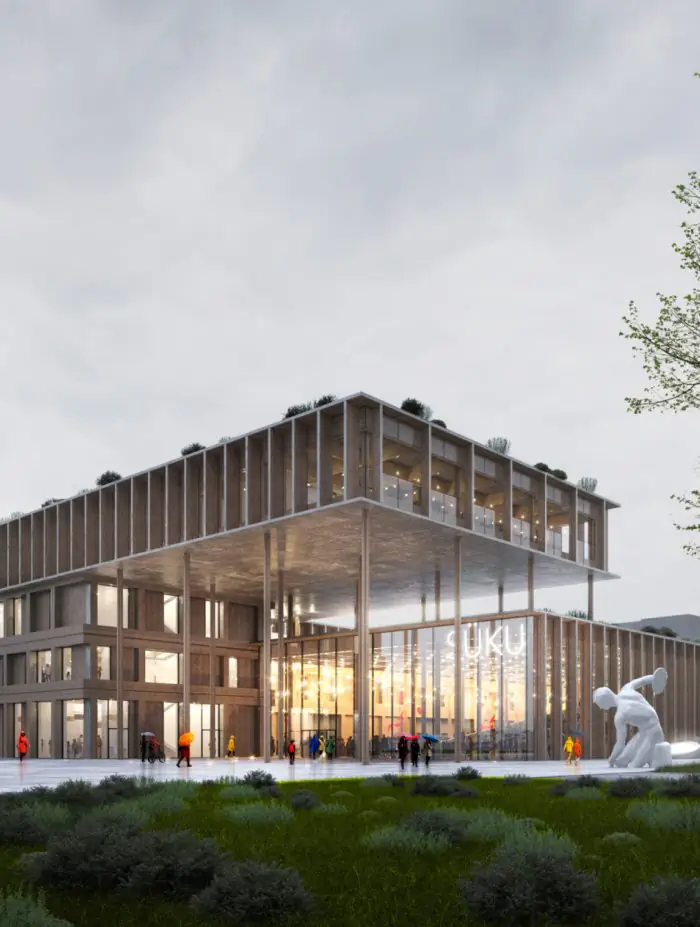
threeplusone.ee
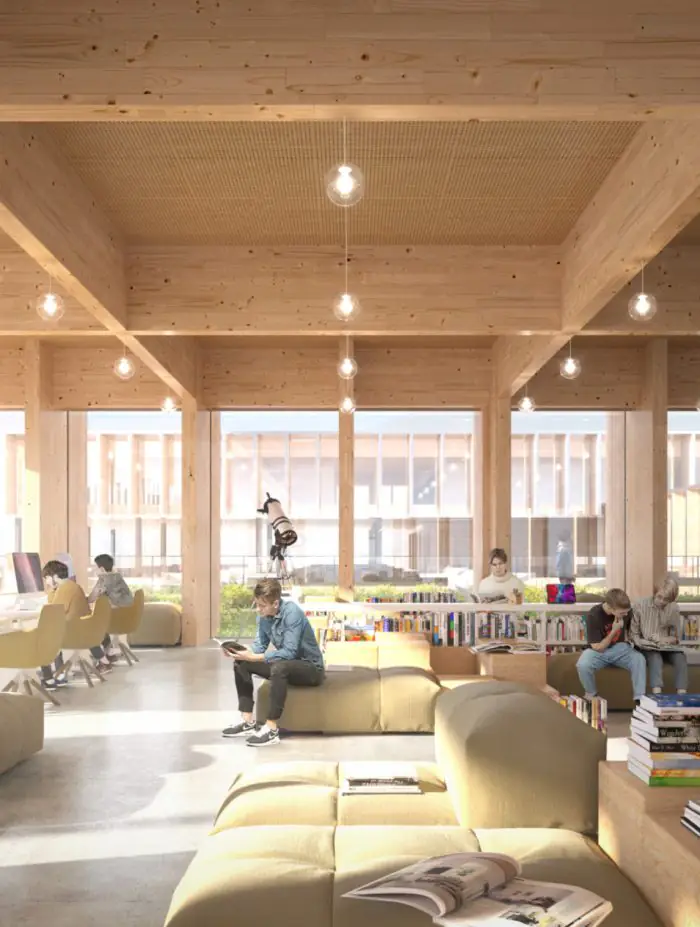
threeplusone.ee
This approach echoes in the future plans within the Baltics as well. The recent competition for the Tartu Downtown Cultural center emphasized the need for multifunctionality within public culture spaces, putting the library as one of the central focus of the new project. We can see this within the winning project designed by architecture studio OÜ Kolm Pluss Üks, where within an open floor plan a freely accessible library is put to encourage the visitors to engage with the cultural centers collection.
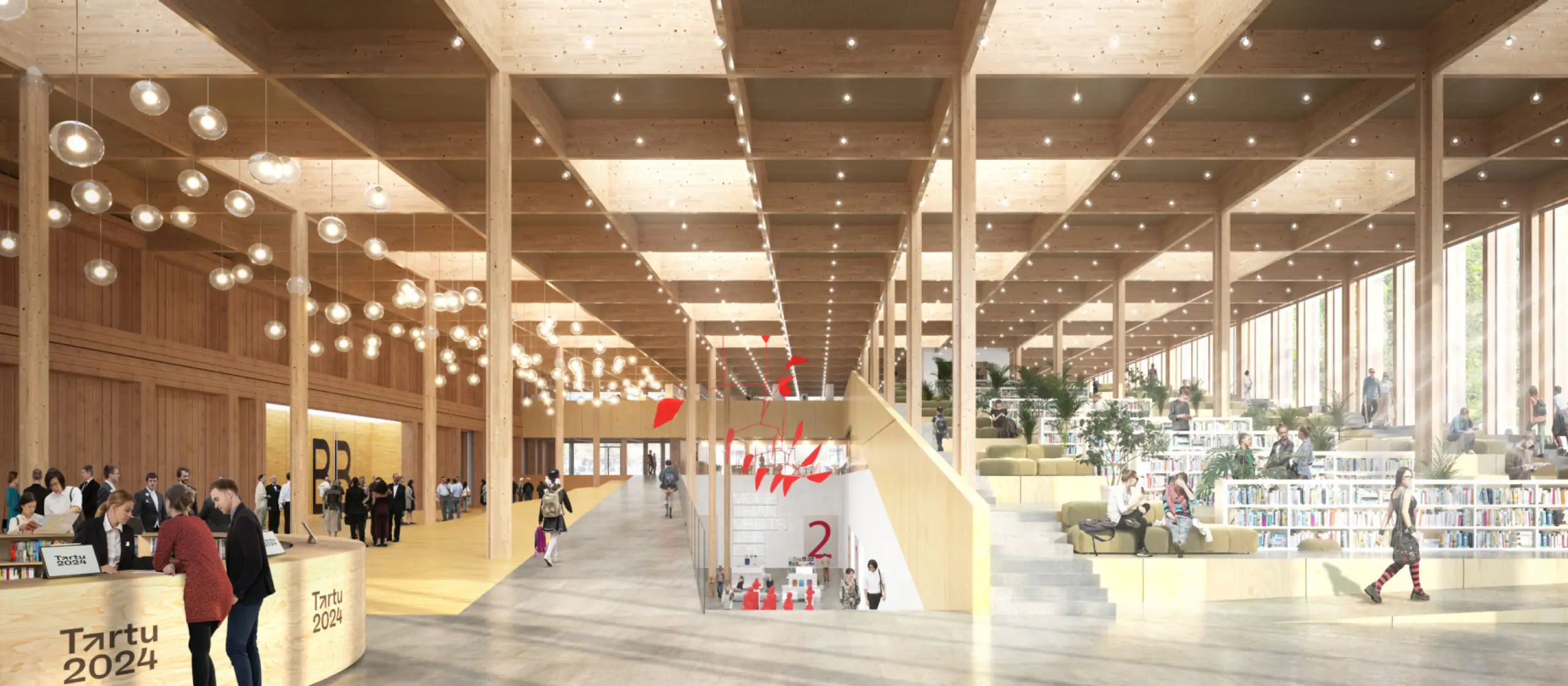
threeplusone.ee
LIBRARY AS REGIONAL HOTSPOTS
While libraries play a major role in shaping capital cities and big urban centers, one might argue that their importance in small cities and rural areas is even more crucial. They often serve as the primary, if not the only source of free access to educational resources, internet connectivity, and cultural programs. In these communities, where educational and recreational opportunities may be limited, libraries act as vital hubs for learning, social interaction, and community engagement.
The municipality of Ogre recently proved that a smaller town can also set new standards and examples of quality public space. The new library building shares its premises with a Civic Registry office, thus one can get married and celebrate it after, by choosing a book from the library’s collection. The library itself offers multiple services for its visitors and organizes a wide range of cultural activities. The architects of “PBR” have made both open public spaces for the readers as well as more individual corners for those who seek more privacy. The usage of materials reflects the surrounding forestry area and with soft architectural forms blends well with the landscape. A special care is given for visitors with toddlers and small children, and even a rock climbing wall can be found for those who are looking for some physical activity during their visit. The library has caught the attention of both architects and library specialists, attracting local and foreign visitors. In 2021, the Annual Latvian Construction award awarded the library with a Grand Prix.
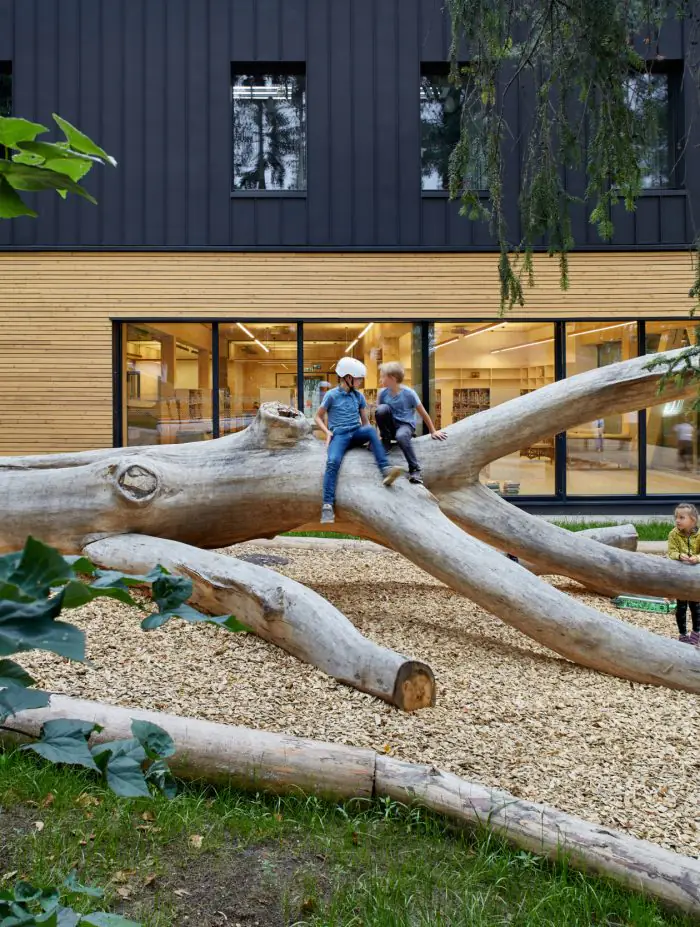
archdaily.com
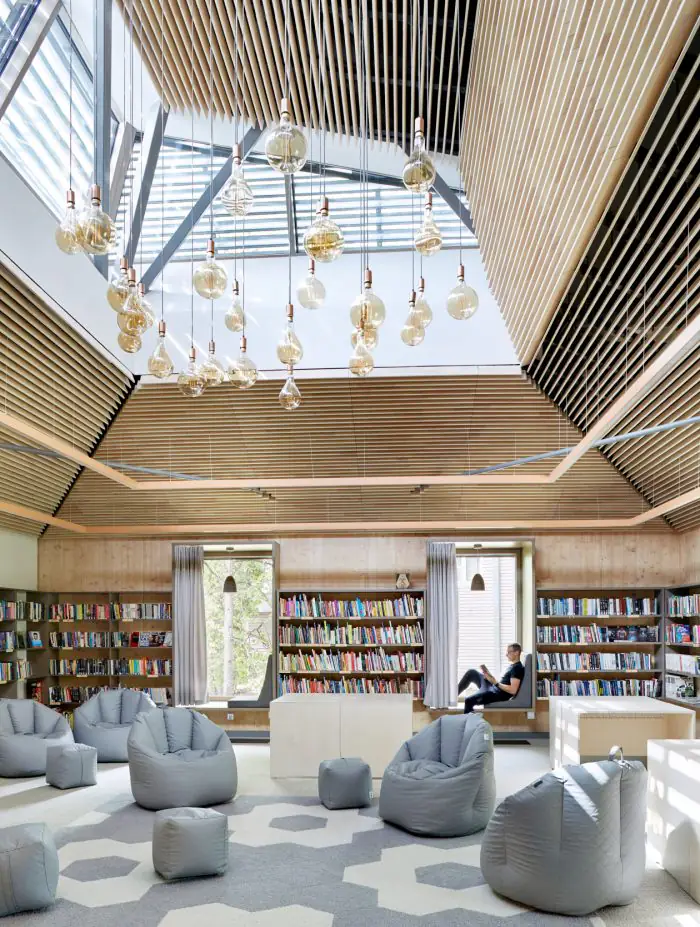
archdaily.com
One of the newest addition to the regional libraries in Latvia is the Gāliņciema library in Ventspils, designed by SARMA & NORDE Arhitekti. This library proclaims itself as a multifunctional center by advocating the region’s traditional culture and providing workshops for those who wish to learn more about it. Its location is also significant – it is not central, but rather a suburban library, providing the inhabitants of Gāliņciems neighborhood a new landmark for an area which is typically only associated as a quiet suburban sprawl of the city. Whilst not big in size, the library still offers architecturally expressive forms: its large transparent glass walls and the monolite structure in its middle pays a homage to the importance of ancient trees and groves within Latvian culture, almost as in sheltering visitors of the library under its canopy.
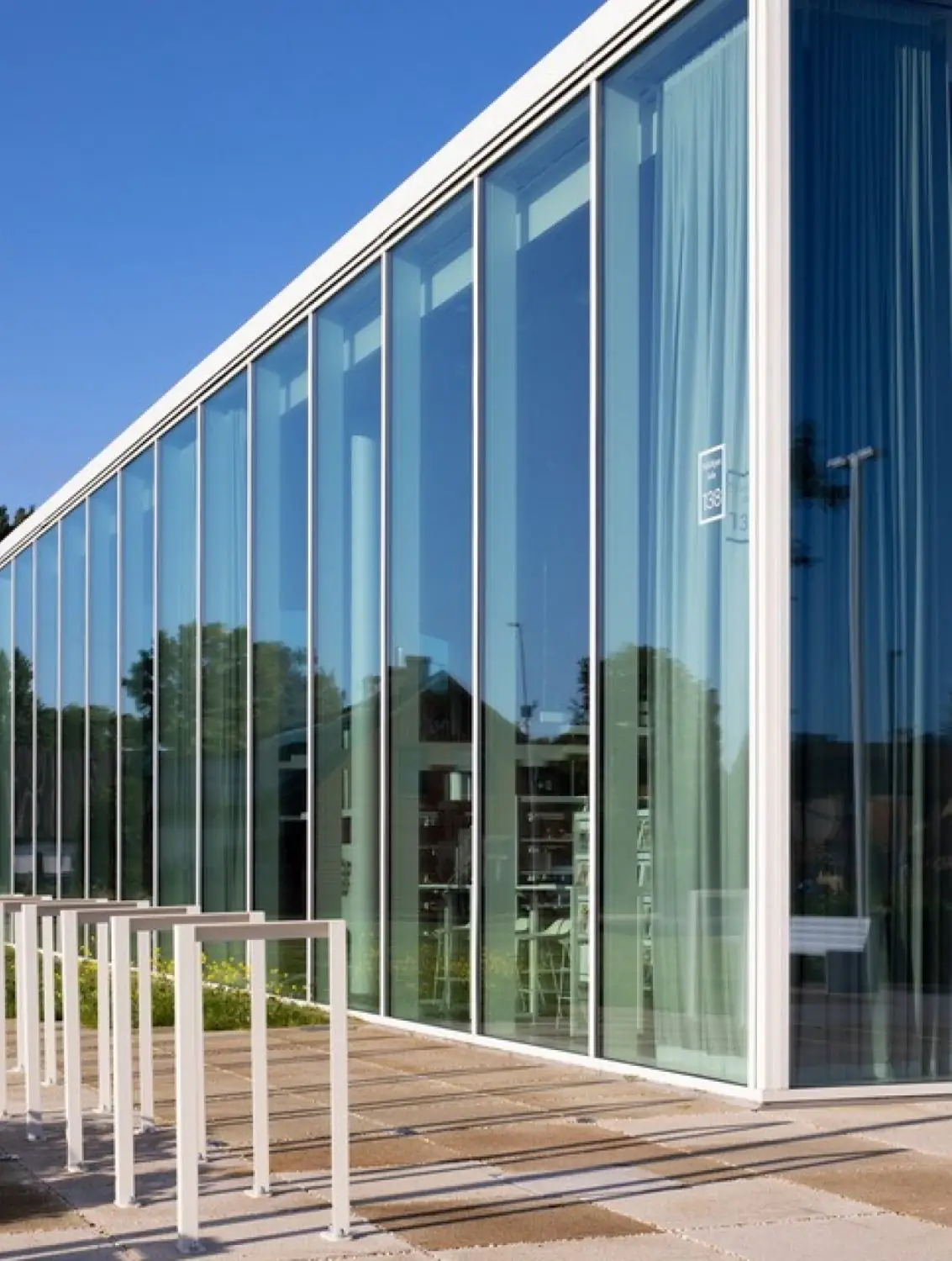
a4d.lv
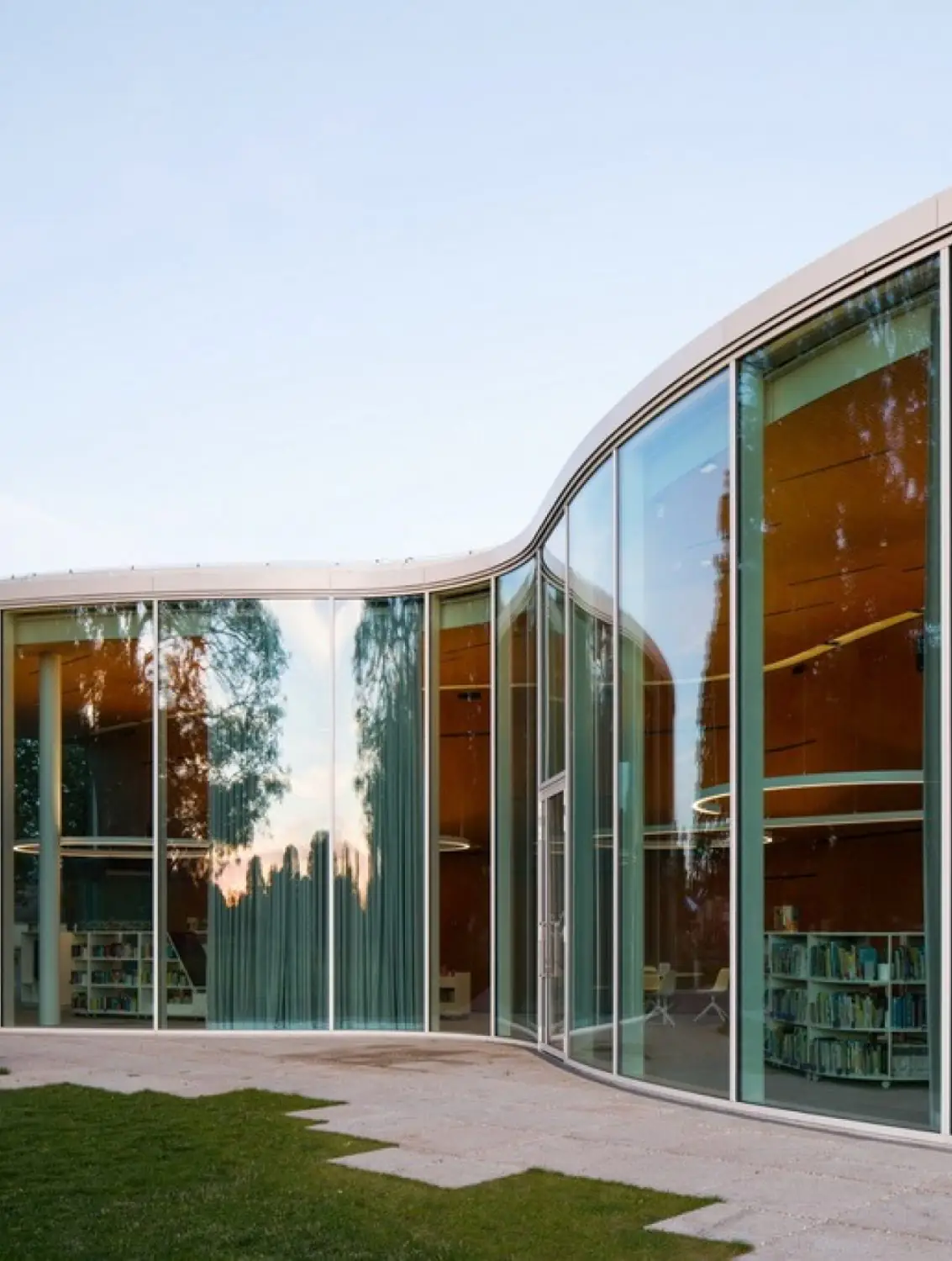
a4d.lv
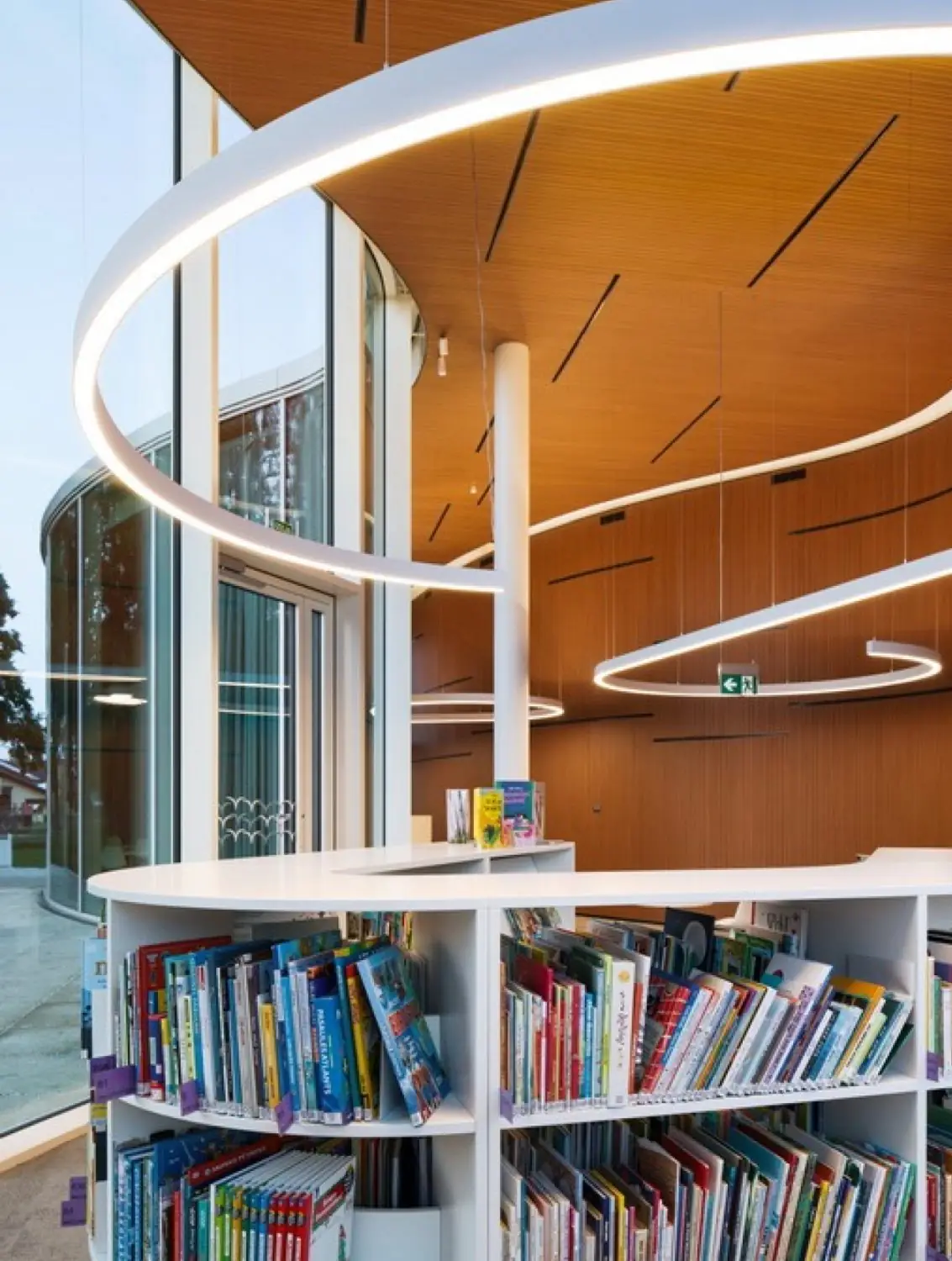
a4d.lv
LIBRARIES ON WHEELS
Recently there’s news of more rural libraries being closed around Latvia. This is an issue that can be seen all across Europe as people are moving to more urbanized centers. This in turn leads to less demand for public services within rural eras which often leads to closing of smaller libraries as well. Yet solutions must be found to engage these populations in educational activities. One of such solutions can be a library bus, also known as a mobile library or bookmobile, which is a specially equipped vehicle that brings library services to communities without easy access to a traditional library building. These mobile libraries travel to remote or rural areas providing residents with the opportunity to borrow books, access digital resources, and participate in educational programs. One of such examples can be found in the previously mentioned Ogre parish and elsewhere in Latvia.
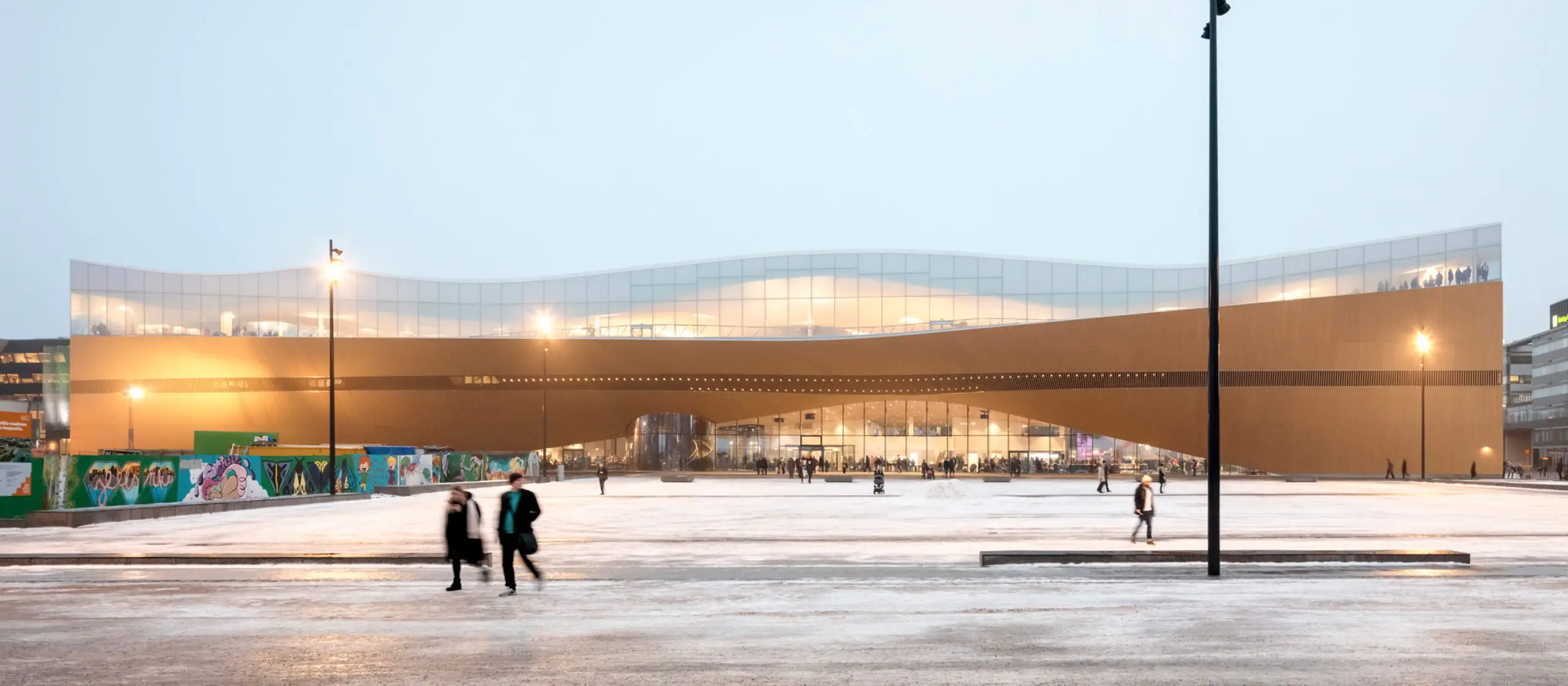
archdaily.com
So what does the future hold for libraries?
Preserving libraries in both urban and rural areas is vital because they provide essential access to information, education, and cultural resources, fostering community engagement and lifelong learning. As previously mentioned, their architecture can capture both local and even national identities.
As multifunctional centers, the future of libraries lies in their ability to adapt to technological advancements and evolving community needs, offering diverse services such as digital literacy programs, coworking spaces, and cultural events. By continuing to evolve, libraries will remain indispensable hubs that bridge social and digital divides, support educational growth, and enhance the overall quality of life in their communities.


